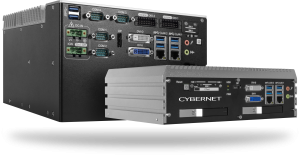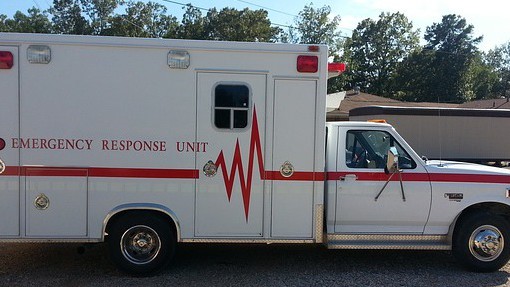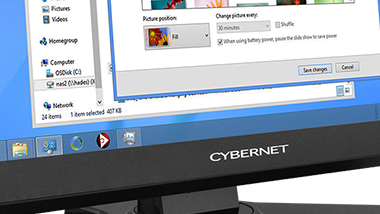Imagine you launch the messaging app on your phone and it turns on the camera instead. Or your laptop only powers up 30 percent of the time. Neither of these scenarios would be a pleasant experience. Most of us would probably ditch the offending device into the nearest trash bin. We expect our computers to be reliable: much of the modern world in fact is built around that simple expectation.
So what is computer reliability? We look to be answering that question here. We’ll also cover the importance of computer reliability and suggest ways to improve it. It may be a simple concept for an important topic, but it’s more extensive than meets the eye.
What Does Computer Reliability Mean
Article Guide
Computer reliability, in its simplest terms, means your machine works as expected. The computer screen lights up after you press the power button, and the operating system, programs, and apps function as they’re supposed to.
Reliability can be calculated through reliability metrics. These show how long a computer or other system functions as expected before something unexpected happens. The data used for these metrics come from a variety of sources ranging from formal testing, on-line questionnaires, to customer testimonials.
Four well-known metrics include:
- Availability (AVAIL)
Also called “uptime,” AVAIL shows the percentage of time that a system is available for use. A network is said to have an AVAIL of 96 percent if it’s down an average of 4 hours out of 100 hours of operation. Note this metric incorporates both planned and unplanned downtime in its calculations.
- Mean Time to Failure (MTTF)
MTTF is a very popular metric that is defined as the average time between unexpected events. The above smartphone mistakenly launching the camera on average every 300 hours, for example, has an MTTF of 300 hours.
- Probability of Failure on Demand (POFOD)
The likelihood of failure when a user requests service. A computer aided diagnosis algorithm that fails to correctly identify a tumor in an X-ray on average once out of a hundred times has a POFOD of 1 percent.
- Rate of Occurrence of Failure (ROCOF)
The number of unexpected events over a particular timespan. A laptop that fails to boot 5 times every 1,000 hours has a ROCOF of 5 per 1,000 hours.
Importance of Computer Reliability
Computers play a huge role in modern society. The modern world would be a very different place if computers did unexpected things every time they were turned on. Consider the following:
- They handle tedious tasks and more. Computers, not stockbrokers, manage many of the trades on Wall Street. On a typical day, 50 to 60 percent are done using complex algorithms and formulas. This frees human stockbrokers to work on other stratagems. These figures rise up to 90 percent during volatile times. This is also because computers are not prone to doubt and hesitation when placing trades.
- Make vital information easily available. Medical providers and other staff in the past had to rely on a patient’s memory to get their medical history. Or they had to go through piles of paperwork to do so. Now such information is stored electronically in electronic medical records, or EMR. The benefits of using EMR software are numerous and include accessing patient’s records with a literal touch of a button or screen; improved communication between providers and other departments; and allow off-site diagnosis from both medical and non-medical staff like a patient’s caregivers.
- They create new job opportunities. It’s estimated before 2020 that employment in the Information Technology (IT) sector reached 12.1 million workers. The sector is thought to have brought in $1.9 trillion to the US economy, making it the third largest after manufacturing and government.
These examples and more only work because people trust the computers to be reliable and to work consistently as intended. Wall Street would be in chaos if the computers above started to display nonsense during critical trades. Or that the EMR brought up the wrong patient’s vitals during an operation. The results could range from huge financial losses to tragic loss of life.
And these are not theoretical. Real world examples include:
- An issue with Australian bank Westpac’s “converter” program providing foreign bank deposits information to the government could cost more than one billion in fines.
- A single line of code was determined to be the cause that shut down the AT&T phone network in 1990.
- In 2018, a self-driving Uber vehicle didn’t recognize a pedestrian walking her bike on the side of the road and struck her. She later died of her injuries.
Improving Computer Reliability
To ensure you and your company can rely on your computers, here are some tips to review:
Suppliers Focused on Quality, Reliability
Computer companies will quickly go out of business if their products are considered unreliable among buyers. So during negotiations, don’t be shy asking if they use any of the metrics above in their Quality Control testing. Cybernet Manufacturing runs its PCs at full capacity for 24-hours before shipping them to customers. This is one of many reasons the company has a failure rate of less than 2 percent.
Right Computer for the Job

A computer is a tool, just like a hammer or a screwdriver. To ensure the best reliability from it, you’ll want to pick the right one for the job. Oil service giant Halliburton Energy Service found it could not rely on its previous computers in plant operations.
They could not handle the dust created during the manufacturing of cement used in oil well construction. A fanless rugged mini PC (pictured) turned out to be the perfect solution to the company’s issues.
Letting Go of Legacy Devices
Legacy devices are those pieces of equipment considered obsolete, outdated, or no longer in production or supported by its manufacturer. This can include software.
Legacy devices can affect computer reliability several ways. One is rendering newer equipment unusable. An extreme example would be trying to use a modern, non-medical grade computer near an old anesthesia machine. This could potentially damage the machine and any patient attached to it. Many hospitals keep such equipment and the attending anesthesiologist outside the operating theater as a result.
Hospitals can buy new anesthesia equipment compatible with the computers, but this is an expensive solution. A new anesthesia machine can cost between $30k to $150k each. A simpler and far less expensive solution is a medical computer. First off, It would not interfere with the anesthesia machine. This allows it to work safely in the operating room. This is unlike non-medical computers which have to be kept outside ORs which limits medical personnel.
Secondly, legacy ports allow connection between the two devices. Hospitals can continue to use their expensive medical devices for years.
A third must-have feature is something like fanless design. The computer is kept cool with no moving parts. Fanned computers, on the other hand, shut down when their fans break, leaving staff to scramble for a substitute until the previous machine is fixed.
Finally, antimicrobial* properties protect the computer casing from deterioration and degradation.
Closing Thoughts
Computer reliability is the expectation that the computer and any related functions like networking performs consistently per specifications. Reliability has to be very high especially since computers can be found in almost every aspect of modern life. The consequences when they fail can be disastrous.
To find out more about computer reliability and on ways to improve it, contact a representative from Cybernet. Also follow Cybernet on Facebook, Twitter, and Linkedin to stay up to date on this and other relevant topics.
Mobile Medical Applications of the Industrial Computer: The Case of the Medical Emergency Vehicle
February 15, 2016
The demands of modern mobile healthcare are much more challenging than those of most other industries. This is where lives are at stake, and emergency situations arise at little to no notice. In recent years,…
0 Comments4 Minutes
Best Hospital Settings for a Medical Computer
September 24, 2015
The importance of using medical computers stems back to when former Secretary of Health and Human Services, Mike Leavitt, noted the importance of effective information technology in hospitals. Levitt, who served in the…
0 Comments5 Minutes
Touchscreen Computers: Where Are They Headed?
February 11, 2016
Touchscreens are to present day computing what Google has been to the internet as we know it today. On the face of it, a touchscreen may be seen as a cosmetic overlay on a fully functional system, but fact is – no…
0 Comments4 Minutes
You Can't
Learn from a Pop-up
But we can deliver knowledge to your inbox!
We dive deep in the industry looking for new trends, technology, news, and updates. We're happy to share them with you.
Knowledge, News, and Industry Updates Right in Your Inbox





